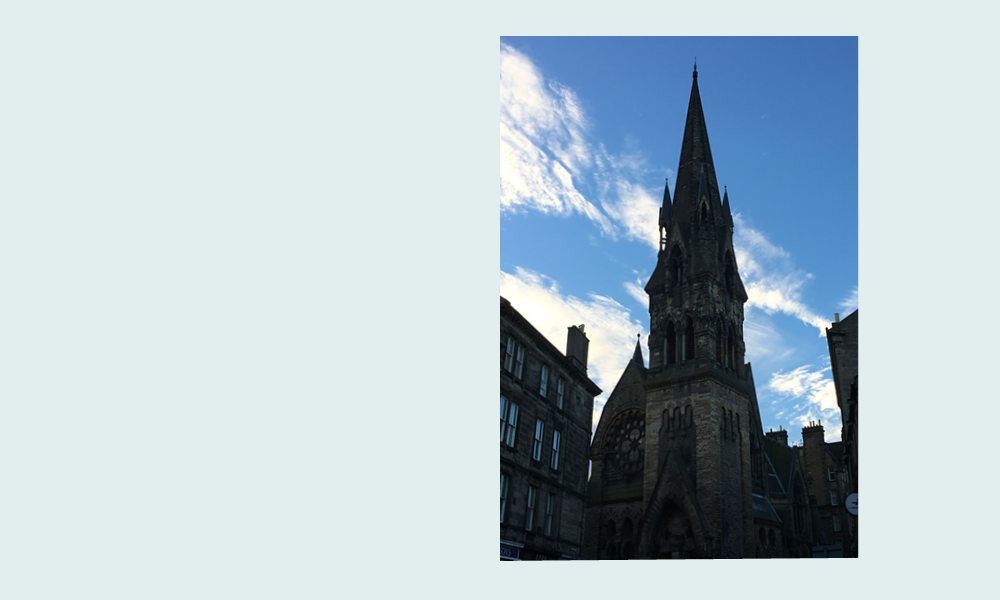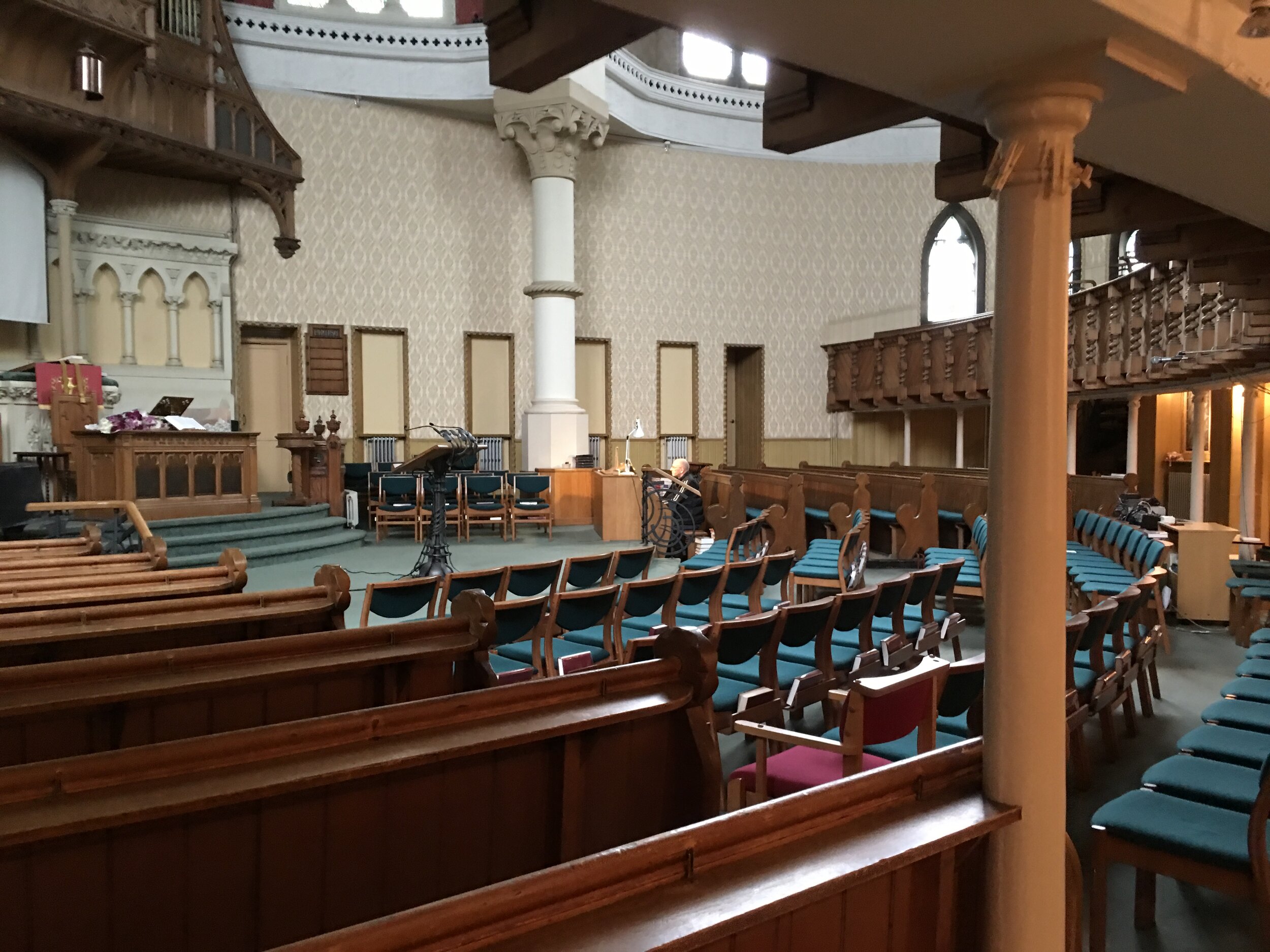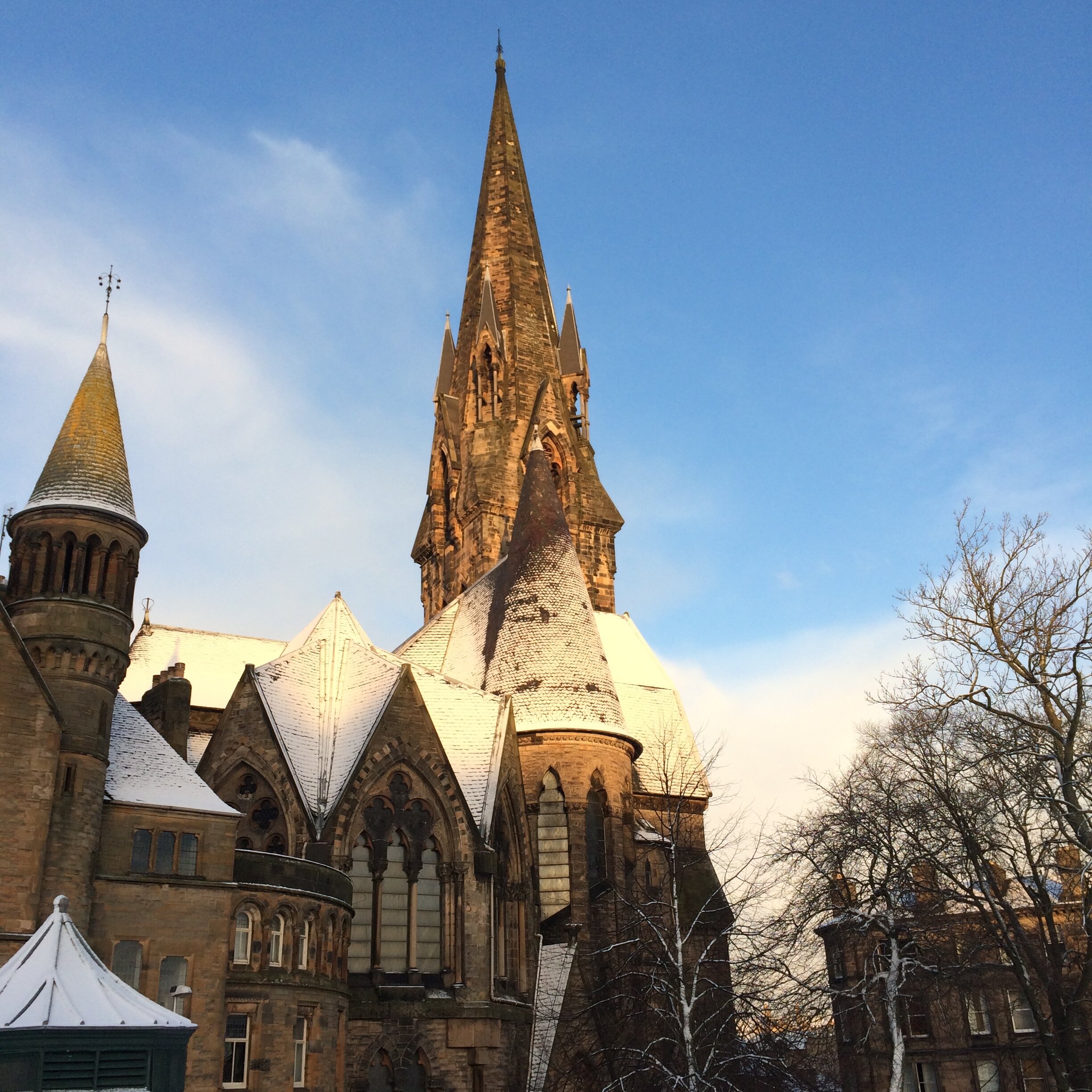
The Building.
The church is not bricks and mortar, but people. That aside, we are privileged to be able to worship in this amazing building, designed by Pilkington. In 2014 the Barclay Church (Viewforth united with us in 2009) celebrated 150 years since the building was opened.
The church was named after Miss Mary Barclay, whose £10,000 bequest paid for the building. Unfortunately we do not have the staff to keep the main building open to visitors, but you are invited to join us before or after our Sunday services at 10.30am and 7pm, when someone will be available to give you a quick tour. Why not join us for worship too – then you might get a real feel for the building.
Architectural guide to Barclay Viewforth Church (including some of its history). Download as a PDF below.
Barclay Viewforth fact sheet – a summary of the building’s history and features. Download as a PDF below.
Barclay Viewforth church building tour notes by Stewart Tod, former Property Convener. Download as a PDF below.
The History.
Barclay Viewforth Church (as it is now) is an amalgamation of a number of churches over the years, the most recent being Viewforth Church in 2009.
The church – originally known as “The Barclay Church” after Mary Barclay whose legacy paid for its building – stands on the edge of Bruntsfield Links, an area which used to be forest. At that time, Bruntsfield was well outside Edinburgh proper. The main road to London ran along the line of Barclay Terrace, past the wood burners’ cottages at Wright’s Houses, which stood on either side of the Golf Tavern.
The Grove Street Mission.
In 1843, at the time of the Disruption of the Church of Scotland, the Tollcross area was a busy commercial terminus to the canal system which linked Edinburgh and Glasgow, the Forth & Clyde Canal. The area was rough and heavily populated, with many of the dockers living in the area. The canal basin, where barges loaded, unloaded and turned round was in the area now occupied by the Lothian Road Cinema building backing on to Semple Street. The area around the basin was industrial. In 1848, the Free Church at St George’s West began a Mission in Fountainbridge, in Grove Street, which was soon established in a tin roofed hut.
This grew until 1853, when it became a sanctioned charge and one year later, in 1854, Fountainbridge Church was built with Rev James Hood Wilson ordained to preach there. By 1860, however, under his inspired leadership, the Mission Church was thriving and the premises were packed to capacity.
It was becoming clear that if the work was to continue to expand a new and larger building would be required. Pressure was on the Presbytery of Edinburgh to consider a further building in the Tollcross area.
Mary Barclay.
Meanwhile, on 3 December 1858, Miss Mary Barclay of 7 Carlton Terrace died, leaving over £10,000 for the erection of a Free Church. A Board of 17 trustees was appointed and considered sites at Warriston, St Leonard’s and the Grange until the present site was chosen.
The choice of site was heavily influenced by several factors:
The expansion and success of the work of the Grove Street Mission (a Free Church Mission) under the leadership of James Hood Wilson, demonstrated that this densely populated area would benefit from a Free Church presence.
James Hood Wilson’s heart was in the work in Tollcross and Fountainbridge and he was loath to consider a move. Although he had retired in 1902, he continued to preach from time to time in the Barclay Church until his death in December 1903.
Sign-up to our mailing list to keep up with the latest news and updates.
Click the button below to open the form in a new browser window.





